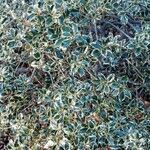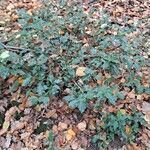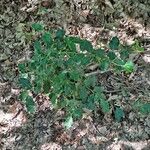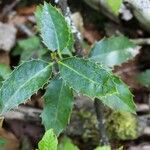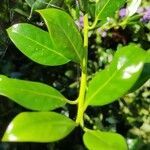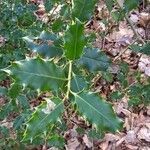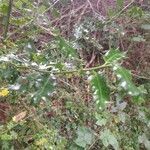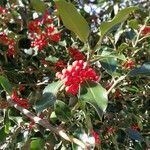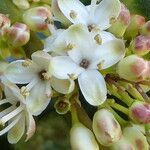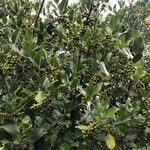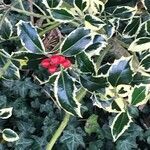Evergreen, dioecious, much-branched shrub or small tree up to c. 12 m high. Shoots puberulent when young, becoming glabrous, slightly ridged. Lvs usually puberulent when very young, becoming glabrous, alternate, elliptic, oblong or elliptic-ovate, dark glossy green above, paler below, (3)-5-8-(10) cm long; lf margin somewhat thickened, undulate, usually deeply serrate-spinose, the upper lvs in particular sometimes flat and entire with mucronate apex, but some lvs, especially those of juvenile and vegetative shoots, always spinous; petiole grooved, (3)-5-10-(15) mm long. Fls few to numerous in fascicles or small cymes; calyx teeth 4, broadly triangular, < tube, ciliolate; petals 4, white, 3-5 mm long; staminodes of ♀ fls large; vestigial ovary of ♂ fls much reduced. Fr. globose, bright red, 6-10 mm diam.
An evergreen tree. It grows 15 m high and spreads 4 m wide. The stem is stout. The bark is smooth and grey. The tree crown is pyramid shaped. The leaves are thick and a glossy green. There are stout prickles along the edge. They alternatively point upwards and downwards. The flowers are small and white. They are in the axils of the leaves. The fruit are bright red berries. They are on female plants only.
